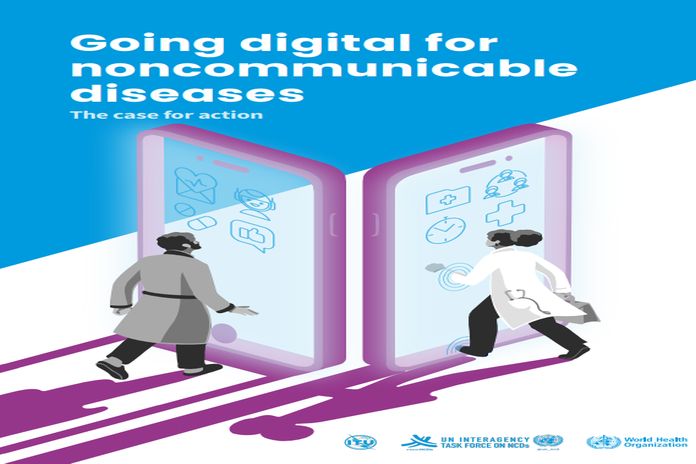GENEVA, Switzerland – An investment today of an additional US$0.24 per patient per year in digital health interventions, such as telemedicine, mobile messaging and chatbots, can help save more than two million lives from noncommunicable diseases over the next decade, says a new report released jointly by the World Health Organization (WHO) and ITU (International Telecommunication Union).
This investment could also avert approximately seven million acute events and hospitalizations, significantly reducing the strain on healthcare systems around the world.
The publication titled “Going digital for noncommunicable diseases: the case for action“ has been launched at an event hosted by the Government of The Gambia during the 79th United Nations General Assembly, in collaboration with the ITU and WHO.
“The future of health is digital. But to make this vision a reality, we need both resources and collaboration,” said WHO director-general Dr Tedros Adhanom Ghebreyesus. No single organization can do it alone. We call on governments, partners, and donors to come together, invest strategically, and ensure that these life-saving innovations reach those who need them most.”
“The digital revolution has the potential to unleash a health revolution,” said ITU secretary-general Doreen Bogdan-Martin. “At ITU, universal meaningful connectivity is a priority because digital is a catalyst for delivering targets in key sectors such as health and education. We call for greater collaboration between the health and tech sectors, including the development of strong digital public infrastructure, essential for the delivery of digital health services that can benefit people everywhere without leaving anyone behind.”
Noncommunicable diseases (NCDs), such as cardiovascular diseases, cancer, diabetes, and chronic respiratory diseases, are responsible for over 74 percent of global deaths annually, many of which are preventable. While significant progress has been made in combating NCDs, the integration of digital health technologies into mainstream health systems remains a challenge. The report shows that there is an urgent need to harness these technologies to scale up effective interventions and mitigate the growing burden on healthcare systems worldwide.
Four major risk factors linked to our everyday environment – tobacco use, unhealthy diet, the harmful use of alcohol and physical inactivity – drive responses in our bodies that also increase NCD risk: raised blood pressure, obesity, raised blood glucose and raised cholesterol. Digital tools, including mobile messaging and chatbots, can support individuals to understand their modifiable risk factors and encourage them to develop healthier habits.
People living with NCDs require regular monitoring and continuous management, and many need long term and specialized care. Digital tools such as telemedicine can help them to overcome barriers to accessing healthcare. Real-time data and tools for health care professionals can also help them make informed decisions about their patients.
While over 60 percent of countries have developed a digital health strategy, there is often a lack of integration of new technologies into the existing health infrastructure. The report calls for countries to invest in digital public infrastructure, and promote standards and interoperability which can overcome critical barriers to realizing the full potential of digital health.
The report serves as a blueprint for action, complementing the WHO Global Initiative on Digital Health and Global Strategy on Digital Health 2020-2025. The United Nations Inter-Agency Task Force for the prevention and control of NCDs (UNIATF) Secretariat, in collaboration with WHO and ITU, including through the Be He@lthy, Be Mobile programmeare committed to providing tailored strategic planning and advocacy support to governments.





